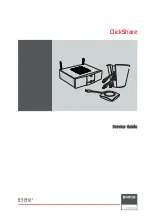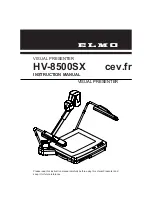
© National Instruments
|
5-5
NI 17xx User Manual
Inverse binarization reverses the assigned bit numbers of the particle region and the background
region. All pixels that belong in the threshold interval, or the particle region, are set to black, and
all pixels outside the threshold interval, or the background region, are set to the image white value.
Figure 5-5 illustrates binarization and inverse binarization.
Figure 5-5.
Binarization and Inverse Binarization
You can enable hardware binarization in the following ways:
•
In Vision Builder AI, configure the
Lookup Table
attribute on the
Advanced
tab of the
Acquire Image (Smart Camera)
step. Refer to the
NI Vision Builder for Automated
Inspection: Configuration Help
for more information.
•
In MAX, use the
Lookup Table
drop-down box on the
LUT
tab of the smart camera
configuration page to enable hardware binarization. Refer to the
Measurement &
Automation Explorer Help for NI-IMAQ
for more information.
Maintenance
Do not touch the CCD sensor by hand or with other objects. The sensor can be damaged by
electrostatic discharge (ESD), body oils, and particulate matter.
Use a lens mount cover whenever a lens is not mounted on the camera to protect the sensor from
dust and dirt.
Avoid drastic temperature changes to prevent dew condensation.
When necessary, use the following procedure to clean the sensor at a workstation equipped with
anti-ESD facilities. If dust sticks to the CCD, first attempt to blow it off from the side of the
sensor using ionized air. If oils are present on the sensor, clean the sensor with a cotton bud and
ethyl alcohol. Be careful not to scratch the glass. Use only one pass over the glass per cotton bud
to minimize the risk of recontamination and scratching.
NORMAL
Stored V
alue
Sampled Data
INVERSE
Stored V
alue
Sampled Data
















































